I thought I'd hate the Galaxy Fold, then I bought it and fell in love
Worth is relative and the Galaxy Fold is worth every penny.
Apple iPhone 4S. Nokia Lumia 1020. Samsung Galaxy Note. Huawei P20 Pro. These phones all have one thing in common: they advanced the industry in their own unique way. The Galaxy Fold has achieved what so many others haven't in recent years — it's left a mark and changed the way I use phones forever.
When you consider the phones listed above, each of them bought something different. At the time, they were great phones in their own right, but as so many have tried and failed to replicate their success, they've now become icons of industry in my mind. The iPhone 4S brought us Touch ID, the Galaxy Note is the reason phones have such large screens today, and the Lumia 1020 and Huawei P20 Pro had two of the most innovative cameras of their times.
The Galaxy Fold didn't have the best of starts early last year, but the refreshed Galaxy Fold has certainly delivered. It's not a perfect phone, but it's not about being perfect at first. It's about being innovative. Being bold. Being different. The Galaxy Fold does all of these things, and charges a pretty penny for doing so. Here's why I've fallen in love with it.
A life-changing device
Samsung Galaxy Fold 5G
Bottom line: The Galaxy Fold isn't for everyone, but for me, it's completely changed my life. It's the first phone in years that can replace multiple devices, and it's by far the best tool for multitasking on the go. Big screen and little screen, there's a lot to like about the Galaxy Fold 5G, if you can stomach the $2,500 price tag.
Pros
- Oozes wow factor
- Reliable rear cameras can take great photos
- OneUI has lots of optimizations on the Galaxy Fold
- Near-perfect for multitasking
- Large screen is great for working on the go
Cons
- Poor selfie quality
- Slightly thicker than other devices
- Occasional performance stutters
- 5G variant not really necessary right now
- Device is more fragile than a regular phone
Galaxy Fold 5G: $2300 at Amazon Galaxy Fold 4G: $1980 at Best Buy
The things I love
The Galaxy Fold has changed the way I work
2019 was a year of phones where the stakes were higher than ever. The Huawei P30 Pro raised the camera stakes with incredible low light and zoom features, the Galaxy Note 10+ is arguably the most complete phone Samsung has ever made, and the iPhone 11 Pro has proven to be the best all round phone Apple has made in recent years.
None of them elicit the feeling the Galaxy Fold gives me. It oozes wow factor, in a way not seen since the early days of the iPhone, and makes Samsung cool again. Take my recent trip to CES 2020; I pulled the Galaxy Fold out at a roulette table and the pit boss got so excited, he spent half an hour pulling in all the dealers and asking me to show them the Fold.
It's not just style, the Galaxy Fold has substance as well and it's the closest we've come to a smartphone replacing a laptop.
More importantly, the Galaxy Fold has made me rethink smartphones. Now I'm no longer just looking for a feature like a great camera, but instead looking for ways that my phone can truly improve my workflow and life. Take multitasking: two apps side by side with enough visible space when the keyboard is open is the ideal solution, and the Fold is the only smartphone capable of doing this well. It's not just style, the Galaxy Fold has substance as well and it's the closest we've come to a smartphone replacing a laptop.
Shortly after the Fold was launched, I played with the Mate X and said that the Fold's two screen approach was a mistake. Now I've used it, I take it back entirely. I find it just as useful as the main screen.
When I reviewed the Galaxy S10e last year, I called it the best little phone ever made. The reason? It is super easy to use in one hand, when you're on the go or trying to mulitask while doing something else. The Fold's smaller 4.3-inch outer screen delivers a similar experience, albeit narrower than a regular smartphone. This can make typing using Samsung's keyboard a chore, but switching out to a third party and swiping away across the keys makes it feel effortless. I use SwiftKey and am as fast as I am on a regular phone, albeit with a few more corrections needed thanks to the narrower screen.
The feeling of joy the Galaxy Fold inspires is inexplicable. Within one hour, I had dumped my iPhone 11 Pro.
The Fold is considerably and understandably quite bulky when you're using the small outer screen, but it's not too bulky. It's quite reminiscent of the Nokia E90 Communicator of old, remade for the 21st century. I find myself using it the small screen all the time for everything from browsing Twitter feeds and reviewing maps directions. If I'm moving, I use the small screen, while when I'm stationary, the big screen comes out to play.
Where Samsung has stolen a march on just about everybody else is the software. This feels strange to say given Apple usually has the best integration between different features, but the ability to start reading or watching on the small screen and continue by unfolding the big screen should not be underestimated. By default, the display turns off when you close the big screen, but there is a setting to continue displaying on the small screen, which is enabled on a per-app basis.
Until this point, we didn't know exactly how folding phones would complete the experience with software, but aside from a few glitches with apps that don't resize properly or need to be restarted, this feature is incredibly polished. In fact, I'd say that Samsung has nailed it.
The Galaxy Fold is the most exciting phone I've used in years. Samsung has nailed it.
While Samsung's software has been much-maligned for many years, it's undeniable that the company has the best suite of multitasking features on any phone. Thanks to ten years of perfecting multi-window on the Galaxy Note series, Samsung is able to roll out three window multitasking to the Galaxy Fold with ease and polish. Most first-gen products feel beta at best, but the software on the Galaxy Fold has all the polish of a tenth generation smartphone.
The three-window multitasking is particularly useful. There's no way to save a three-window setup, but it's great for watching a live soccer game, or tuning into a TV show. I've got a three-window setup for soccer (YouTube TV, Twitter, live stats) which I load every time, but I'd love to be able to save the setup and launch it with just one tap. Samsung already does this with two app multitasking on Apps Edge, so I hope it's sooner rather than later that it comes to the Fold.
Yeah pretty much hahaha! Actually also use sofascore for stats pic.twitter.com/SNCt05dZlI
— Nirave 尼拉夫 (@nirave) December 7, 2019
How can I best describe the experience of using the two screens as part of one experience? Remember when Joey went "into the map" during that Friends trip to London? Yeah, going from Google Maps on the small screen to the tablet feels like that. It's not just bigger, it's more immersive. Of course, you won't want to use it unfolded all the time, so you can fire it open to see the bigger picture and close it up when you're walking/moving and just need navigation.
This is why it's the most exciting phone I've used in years. It's truly revolutionary in that there are so many ways to use it. When you're using multiple apps on the big screen, you can move apps around and even customize the split between the two sides of the panel. However you want to use it to get things done, the Fold seems to deliver exactly what you need or has a viable alternative.
The Galaxy Fold can take very visually appealing photos, like the unedited ones above.
For example, I'm writing this entire review on the Fold. For those that have read my past reviews, you'll know I often write them on the phone. However, that's usually using Word and then adding to the CMS using my computer. With this review, I'm typing directly into the CMS using the browser and it's a fantastic experience, no different to doing it on my iPad. The screen is just big enough to help you get things done.
I expected to hate the Galaxy Fold. Then I bought it and fell in love.
When Samsung first announced the Fold last February, I wrote it off. Shortly after, Huawei unveiled the Mate X which I said was my ideal type of foldable. The two screens on the Fold felt unnecessary, and I thought Samsung had missed a trick by going for an 'innie' fold.
I originally bought the Fold expecting to hate it and return it within a week; then I actually used it and fell in love. I've used a lot of the flagship smartphones that were released in 2019, and none captivated me like the Galaxy Fold. Looking at r/GalaxyFold and other online communities, it's clear I'm not the only person who's absolutely in love with Samsung's first foldable.
There's room for improvement
The Galaxy Fold 5G is still a first gen product
When in doubt, fold it out pic.twitter.com/OiW0VWNymr
— Nirave 尼拉夫 (@nirave) November 16, 2019
Do you remember when you had to be really careful not to use your phone too much in the rain? The perennial fear that a few drops of rain in the wrong place could mean an unrelated issue six months later would be diagnosed as liquid damage? For the most part, this is no longer a concern with modern devices thanks to higher resilience signified by IP ratings, but the Galaxy Fold takes us back to those days.
Samsung didn't make the Fold more durable, they just made it harder for dirt and debris to get under the screen.
On more than one occasion, a simple drop of rain has caused me distress. We've known the Galaxy Fold is fragile ever since the first launch and recall, but in day to day practice, it's only things like the thought of water accidentally getting in to the small gap beneath the screen and breaking it. Or a small piece of dust that's tucked just underneath the bezel and the fear that it'll eventually result in a dead display.
Neither of these has happened with the second version of the Fold just yet, but knowing how easily it can break — Samsung made it harder for dirt and debris to get under the screen, they didn't make it more durable — gives cause for concern in a way that other devices don't. The Galaxy Fold 5G comes with a year's free Premier Service which covers one accidental or liquid damage repair, available for $20 per month in the U.S., and provides a little reassurance, but it's an expensive phone and you'll constantly be worried about breaking it.
Samsung also has a small issue with some apps not supporting the resizing of the windows between the two screens. A significant number of the apps I use daily have to be restarted if you switch screens, and certain games, like Football Manager, don't support the Galaxy Fold at all. Then there's Instagram and the Stories feature, which fails to scale properly to either display and chops part of the image off.
Android 10 brings support for foldable devices, so hopefully the update for the Fold, which is being deprioritized until April, will improve this. Alternatively, as suggested by MrMobile, this is where Samsung could bring the app in a window feature from Note phones to the Galaxy Fold and potentially solve this problem.
Two takes on two different use cases
The Galaxy Fold and Motorola RAZR are not competitors
The Galaxy Fold isn't for everyone. For a lot of people, it'll be too heavy, or too bulky. It won't bring back the "feels" that the Motorola RAZR inspires, and more importantly, a lot of people just won't need the tablet size screen. That's where the Motorola RAZR comes in, and this is why foldable phones offer a super exciting future.
Samsung Galaxy Fold vs Motorola RAZR
Back in November, Motorola announced the RAZR and to say they underestimated its potential would be accurate. The company expected to launch it on January 9, but unprecedented demand means they opted to push back that date. It's not surprising either — the Motorola RAZR is going to light up the industry again (and it's available to pre-order now ahead of a release on February 6th.
My ideal scenario is to have the Galaxy Fold as a work phone, and the Motorola RAZR as my personal phone.
How do I know this? First, I've played with it. And I fell in love for completely different reasons. While the Galaxy Fold is my device for getting things done, the Motorola RAZR oozes cool factor of a completely different kind. That front screen is great for scrolling through notifications, while the phone unfolds into a mostly regularly sized 6.2-inch smartphone. Simply put, it demands attention and doesn't take a lot of space in your pocket, making it perfect for a night out.
Second, since the moment I started using the Galaxy Fold in public, everyone always asks: is that the new RAZR? Not people in the tech industry, or even enthusiasts mind you, but what we would define as the average customer. The person serving me in a shop. The stewardess as I'm boarding a plane. My barber as he's cutting my hair. The same people I would never associate as being interested in the latest technology have all heard of Motorola's new phone.
I previously worked in retail through many of the most successful launches in the past decade, and the last time I saw this type of response to a smartphone was the iPhone 4 launch. The Galaxy Fold appeals to a different market, making it more exclusive for me, which is also why Samsung is planning the clamshell foldable Galaxy Z Flip to compete directly with the RAZR.
The Galaxy Fold makes phones cool again
Galaxy Fold 5G Bottom Line
The U.S. market doesn't get the Galaxy Fold 5G (model number N970-NBU1), which is only available in a few markets around the world. Thankfully the UK is one of these, and it's exclusive to EE. The retail price is £2,000 which translates to roughly $2500 at the time of writing, making it about 30% more expensive than the U.S. version. This is not a phone for those with shallow pockets, but if you can get it, this is a breathtaking phone to hold. You can buy the Galaxy Fold 5G through third party retailers on Amazon but it likely won't have a warranty.
For me, that price... isn't that high actually. Here, let me explain.
It's not just style, the Galaxy Fold has substance as well.
Look at the price at the same level as a smartphone and yes, it's expensive. But it's more than just a smartphone. To me, it has replaced a smartphone, Kindle and small tablet. Consider the Galaxy S10+ is $1,200, a Kindle is about $150 and the iPad Mini is $450. The Galaxy Fold is about $200 more than those three devices combined, which isn't a high premium to pay to have it all in one device.
Of course, it's not a perfect device. And yes, its recall was hugely embarrassing for Samsung. But think back to the past decade, and Samsung itself has proved you can come back from a really bad start. Despite some notable flaws and weaknesses in the Galaxy Fold, the rest is so good that I'm willing to make the compromises needed. It's rare that a piece of technology changes how you think of phones, and its lasting testament is that it's the only phone I want to use at any given point.
The Galaxy Fold won't sell at the volume of the Galaxy S10 and Note 10 series — although the company has reportedly shipped half a million units — but it's not designed to. Much like the original Galaxy Note and the Galaxy Note Edge, it's designed to showcase a future. Thanks to the Samsung Galaxy Fold, that foldable future now looks much brighter.
A life-changing device
Samsung Galaxy Fold 5G
The Galaxy Fold isn't for everyone, but for me, it's completely changed my life. It's the first phone in years that can replace multiple devices, and it's by far the best tool for multitasking on the go. Big screen and little screen, there's a lot to like about the Galaxy Fold 5G, especially if you can stomach the $2,500 price tag.
Galaxy Fold 5G: $2300 at Amazon Galaxy Fold 4G: $1980 at Best Buy
from Android Central - Android Forums, News, Reviews, Help and Android Wallpapers https://ift.tt/2GwqbKs
via IFTTT
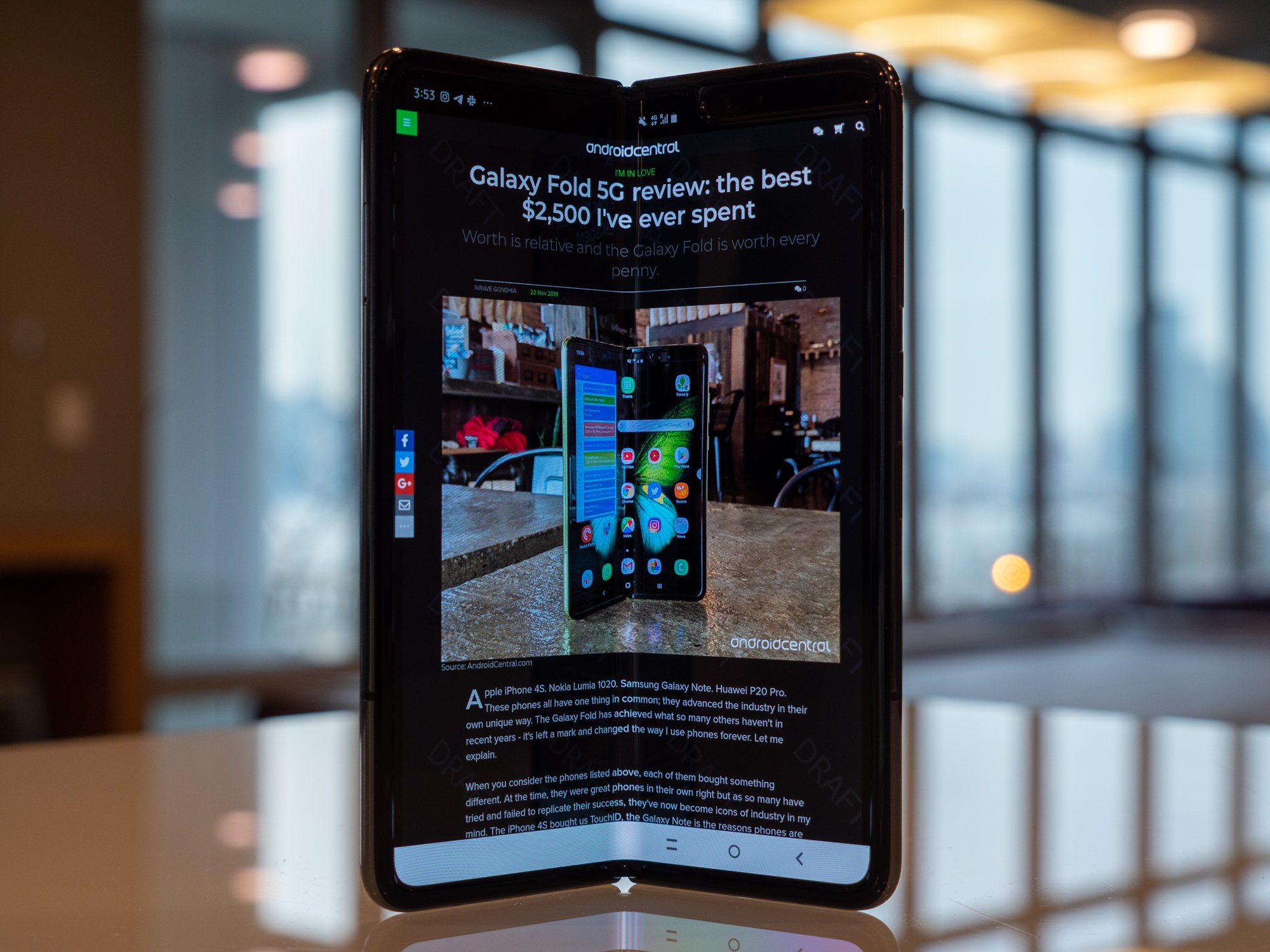
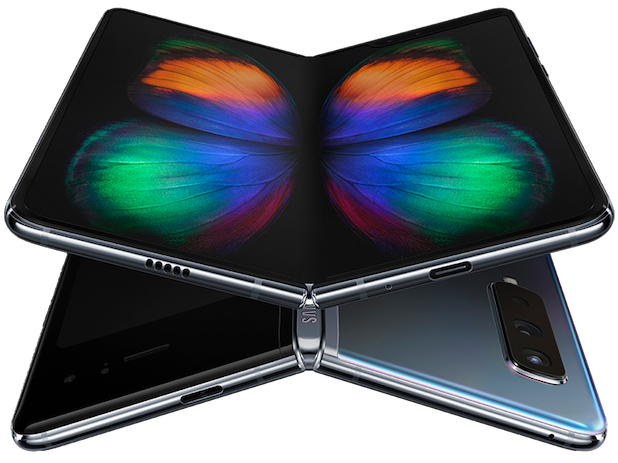
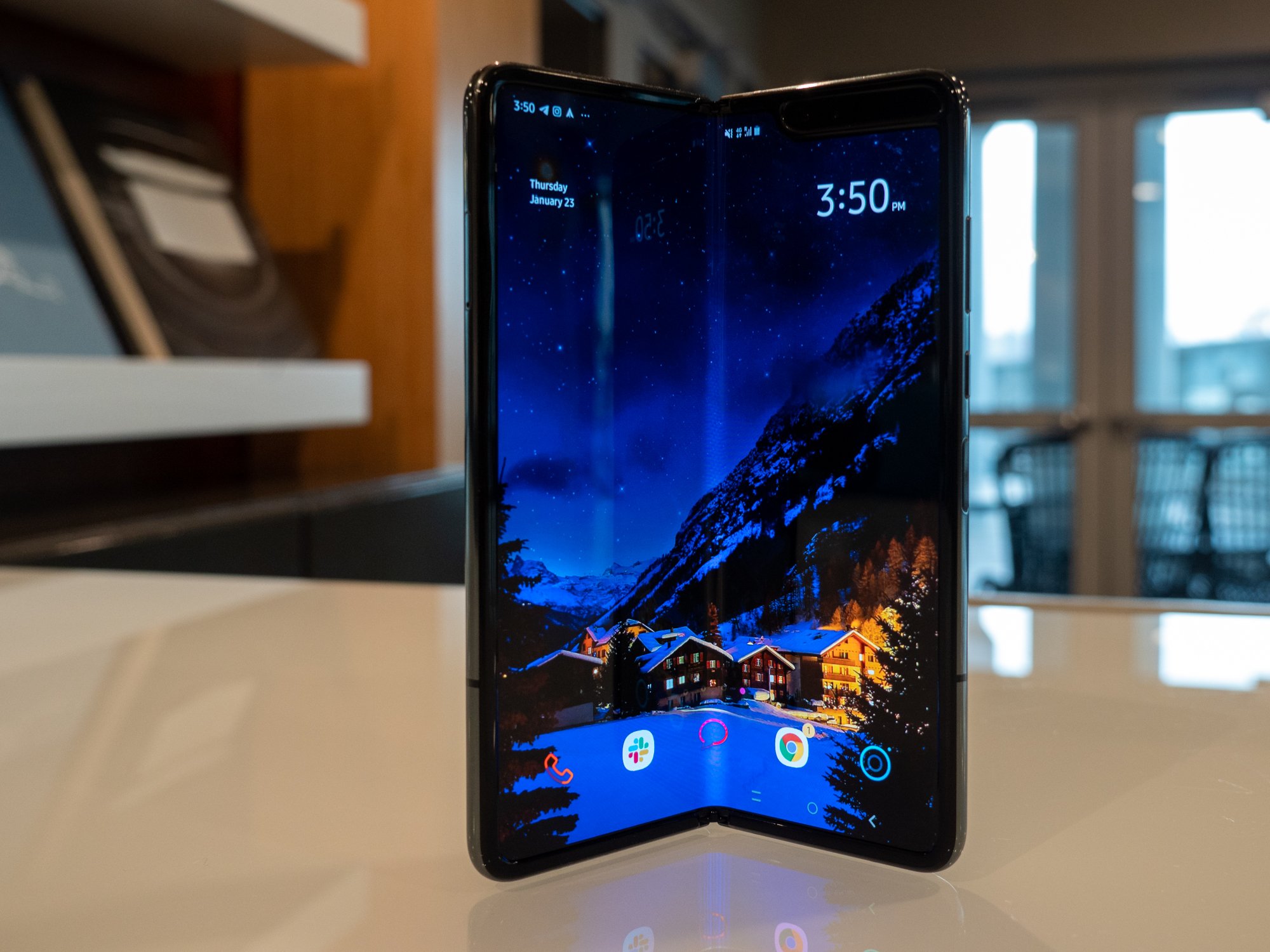
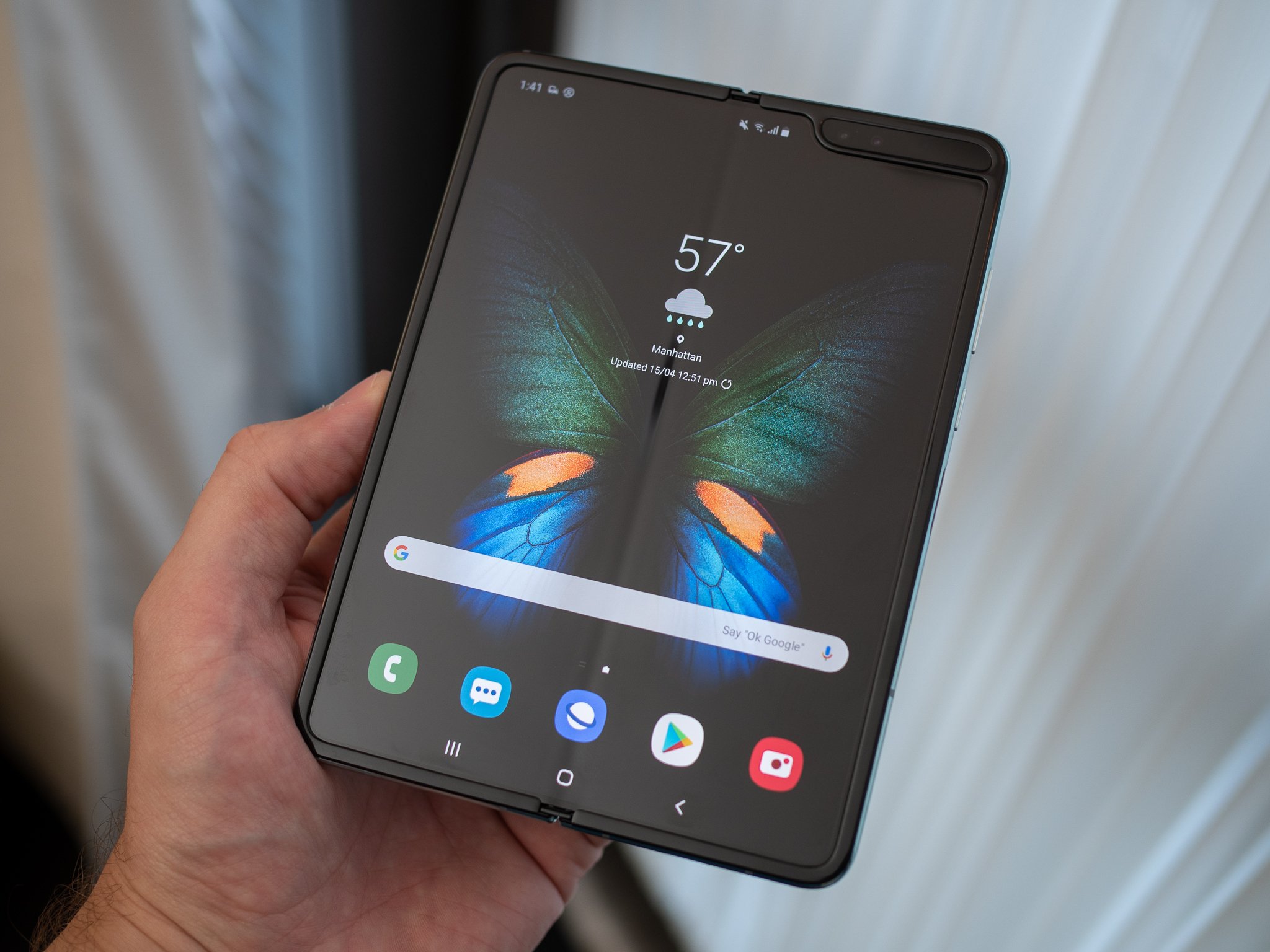
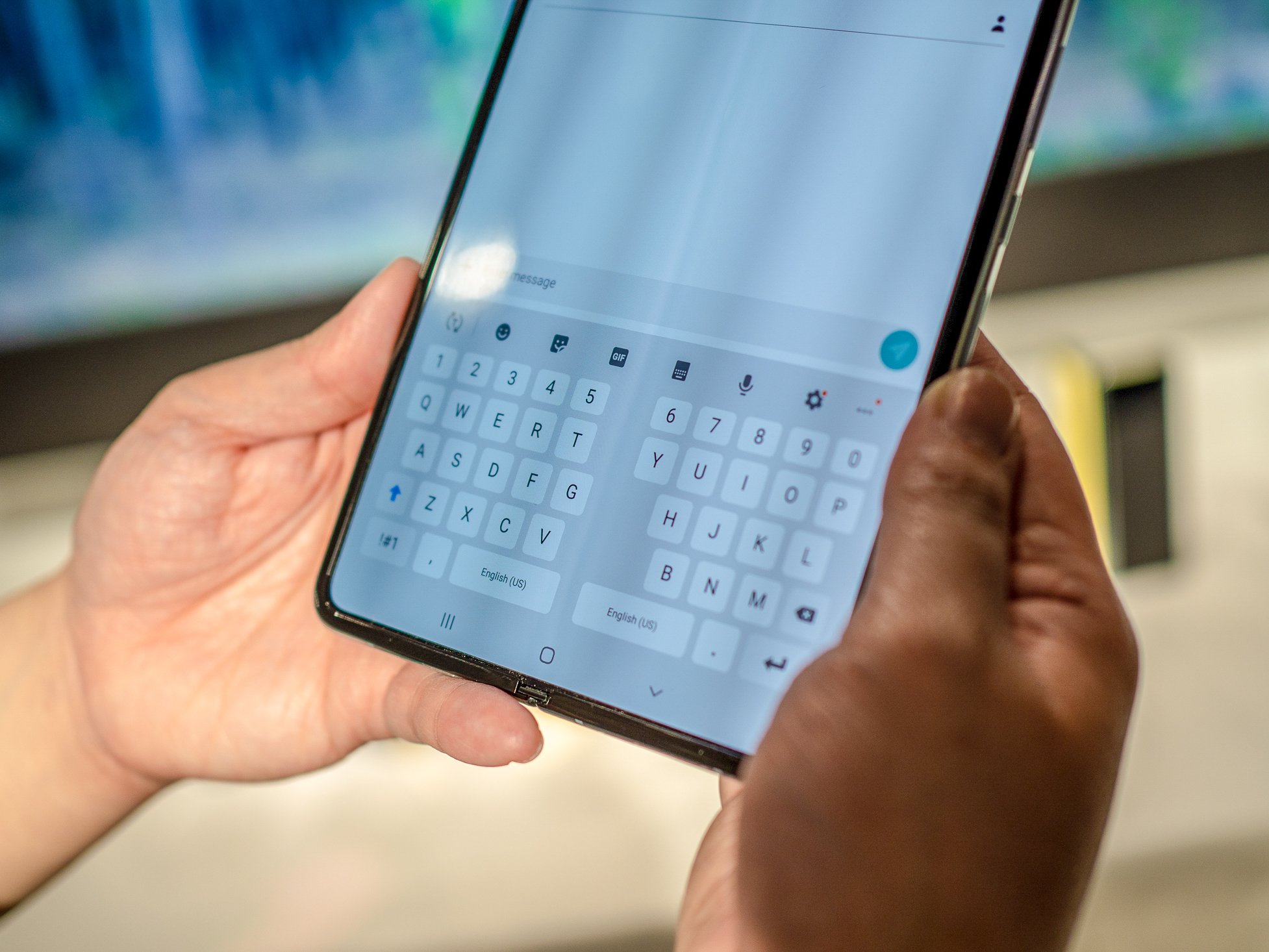
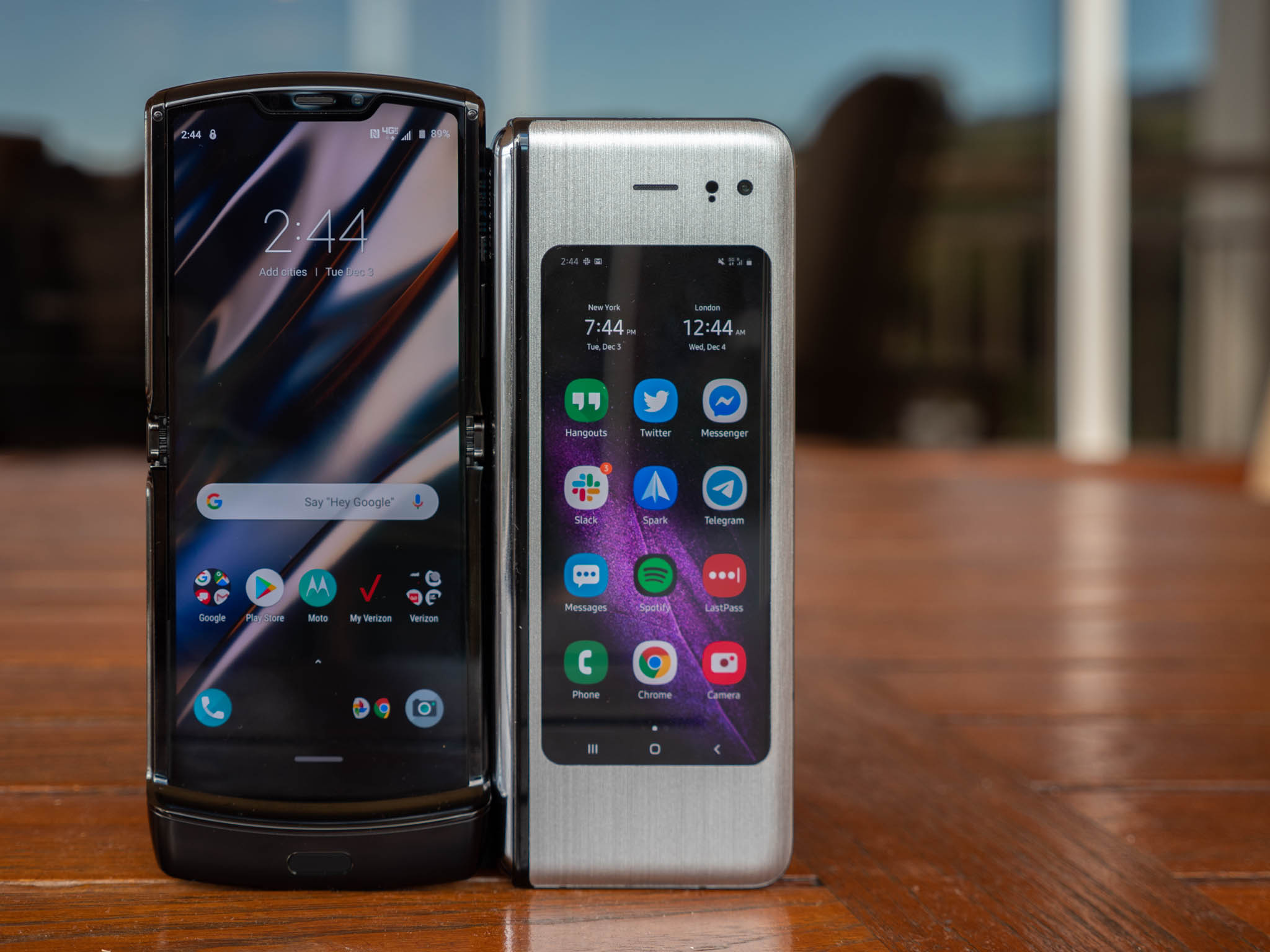

ليست هناك تعليقات: